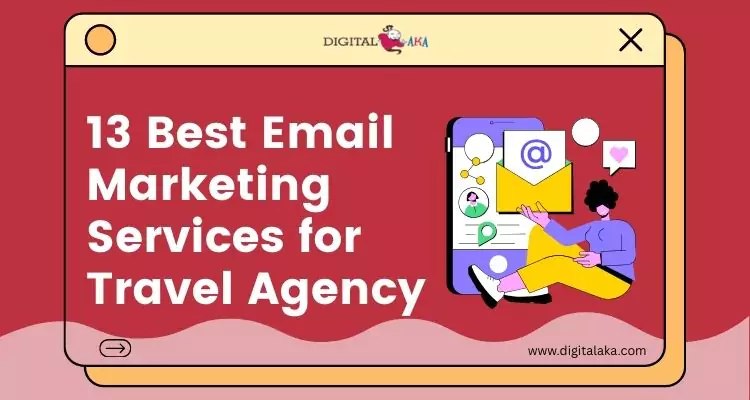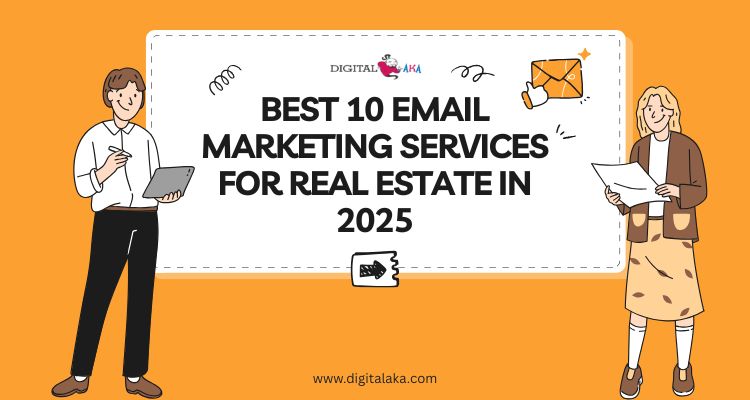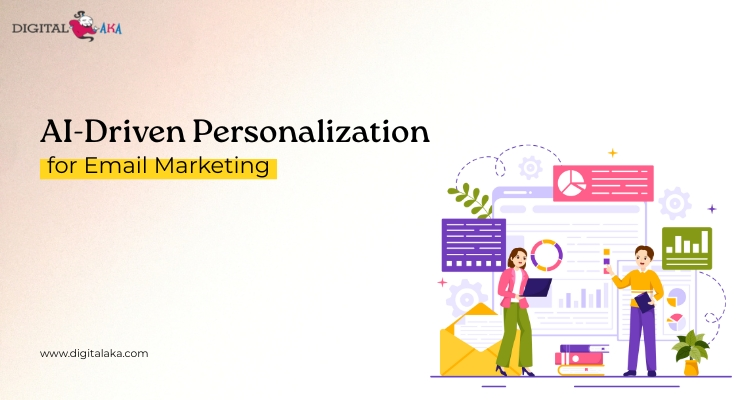
Bounce Rate- What It Is, Why It Matters & How to Fix It
February 14, 2025
Email Subject Lines- Write Catchy & Powerful Emails
February 19, 2025Email marketing has long been an important part of digital marketing. It helps businesses connect with their customers, promote products, and build strong relationships. However, many people believe in Email Marketing Myths that are not true. These myths can create confusion, leading to missed opportunities, low engagement, and ineffective email campaigns.
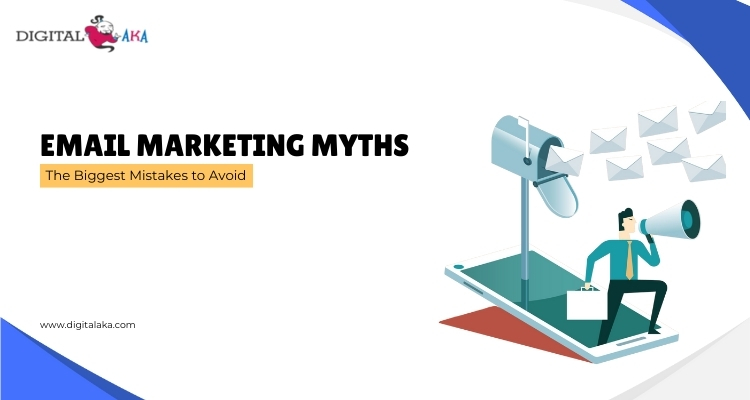
In this simple guide, we will explain the most common myths about email marketing and share the real truth. By understanding these myths, you can improve your email strategies and get better results.
Table of Contents
What Are Email Marketing Myths and Why Do They Exist?
Email marketing myths are false beliefs about email marketing strategies that many people think are true. These myths can confuse, leading to missed opportunities, low email engagement, and poor email campaign results. When businesses believe these myths, they may not use email marketing effectively and lose chances to connect with customers.
Why Do These Myths Exist?
1. Old Email Marketing Rules—Some myths stem from outdated email marketing practices that no longer work. Although email marketing has evolved, many people still follow old strategies.
2. Misunderstanding Email Performance – Some businesses see low open rates or poor click-through rates once and assume email marketing does not work. In reality, success depends on using the right email marketing strategies.
3. Fear of Spam Emails – Many believe that marketing emails always go to spam, but when businesses use email best practices, their emails land in the inbox and get higher engagement.
4. Wrong Email Marketing Advice – Some myths spread due to misleading email marketing tips from untrusted sources. Following incorrect email marketing strategies can lead to low email deliverability and poor conversions.
By understanding these email marketing myths and the truth behind them, businesses can create successful email campaigns, increase customer engagement, and improve email marketing ROI.
Pricing
| Trail Plan | Standard Plan | Premium Plan | Professional Plan |
| $50 | $145 | $185 | $225 |
| Sending Limit | Sending Limit | Sending Limit | Sending Limit |
| 1000 Emails/Hour | 1500 Emails/Hour | 3000 Emails/Hour | 5000 Emails/Hour |
8 Common Email Marketing Myths
To help you separate the truth from the myths, here are 10 email marketing myths that could be killing your ROI.
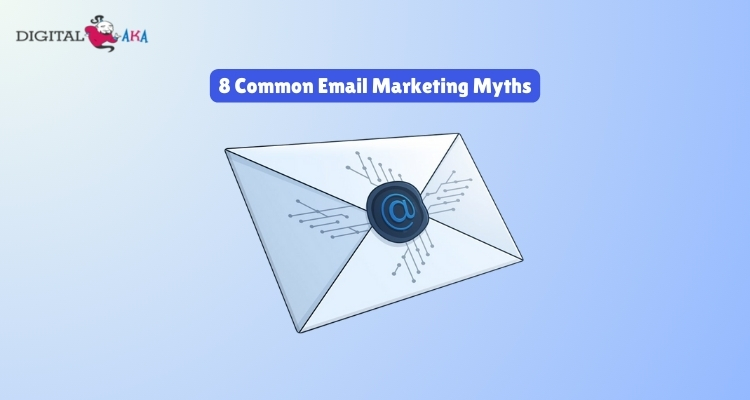
1. Email Marketing Is Dead
Many people believe that email marketing is no longer useful because of social media and other digital platforms. This is one of the biggest email marketing myths. Some think that people do not check emails anymore or that emails always go to spam. However, the truth is very different—email marketing is still one of the most powerful ways to connect with customers.
Reality Check:
- Research shows that for every $1 spent on email marketing, businesses earn an average of $42.
- More than 4 billion people use email worldwide, and this number keeps growing.
- Companies that use email marketing properly see higher engagement, better conversions, and increased sales.
Unlike social media, where algorithms decide who sees your posts, emails go directly to the inbox of your audience. This gives businesses better control over their communication. Personalized and well-crafted emails help build strong relationships with customers.
Ignoring email marketing means missing out on a great opportunity. The data proves that email marketing is not dead—it is growing and helping businesses succeed.
2. Sending More Emails Annoys Customers
Many people believe that sending too many emails will annoy customers and make them unsubscribe. While it is true that spammy, irrelevant, or excessive emails can drive people away, well-planned emails can increase customer engagement.
Reality Check:
- People Like Emails from Trusted Brands – Studies show that most consumers enjoy receiving promotional emails from brands they trust. If your emails provide value, customers will look forward to them.
- Personalization Makes a Difference – Sending emails that match a customer’s interests improves open rates and click-through rates. Use email segmentation to send the right message to the right people.
- Consistent Emails Build Stronger Relationships – Brands that send emails regularly stay on customers’ minds. Instead of avoiding frequent emails, focus on quality and relevance.
How to Avoid Annoying Customers:
🔹 Send valuable content – Share useful tips, discounts, or updates that help your audience.
🔹 Use segmentation – Group your customers based on their interests and send them emails they care about.
🔹 Keep a schedule – Sending emails once or twice a week is a good balance.
🔹 Allow easy unsubscribing – Give customers the choice to opt-out if they want.
By focusing on relevance and value, email marketing can strengthen customer loyalty instead of annoying subscribers.
3. Unsubscribes Are Bad for Your Business
One of the top email marketing myths is that every time someone unsubscribes, it is a bad thing. In reality, unsubscribes can help improve your email marketing strategy. A clean email list improves deliverability and ensures that your messages reach truly interested people.
Reality Check:
- Better Engagement – People who unsubscribe were likely never going to buy or take action. Removing them helps you focus on real potential customers.
- Improved Email Deliverability – A smaller but active list improves open rates, reducing the chances of emails going to spam.
- Stronger Brand Trust – Giving users an easy way to unsubscribe builds trust and improves your brand’s reputation.
Instead of worrying about unsubscribes, use them to refine your strategy. Analyze why people are leaving and improve your content. Avoid falling for myths about email marketing—a well-managed list will always be more effective than a large, inactive one.
4. Emails Always Land in the Spam Folder
Many marketers worry that their emails will never reach their inboxes because of spam filters. This myth of email marketing is misleading. While spam filters do exist, following best practices can prevent emails from being marked as spam.
Reality Check:
To improve email deliverability, businesses should focus on a few key steps:
- Use Proper Email Authentication – Setting up SPF, DKIM, and DMARC helps verify your emails and prevents them from being blocked.
- Avoid Spam Trigger Words – Words like “free,” “guarantee,” and “urgent” can make emails look like spam. Writing natural and clear subject lines helps.
- Build a Good Sender Reputation – Sending too many emails at once or getting high spam complaints lowers your reputation. Sending quality emails regularly keeps it high.
- Create Engaging Content – Emails with personalized and valuable content get higher open rates and avoid spam folders.
- Follow Best Practices – Always use permission-based marketing and allow users to unsubscribe easily.
By following these steps, businesses can overcome myths about email marketing and improve email performance. Believing top email marketing myths can harm your strategy, but the right approach ensures better engagement and results.
5. More Images in Emails Improve Engagement
One of the top email marketing myths is that adding many images to emails always increases engagement. While pictures can make emails look attractive, too many can cause problems. Large image files take longer to load, especially on mobile devices. If an email loads too slowly, readers may not wait and close it.
Reality Check:
- Text-based emails often work better for professional and transactional messages.
- Too many images can slow down emails and reduce engagement.
- A balance of text and images creates better results, especially on mobile.
A common myth of email marketing is that images alone make an email successful. However, content is just as important. Simple, clear, and valuable text helps readers stay interested. Instead of relying only on images, use them wisely. Small, optimized images work best.
Understanding myths about email marketing helps businesses create better campaigns. A well-balanced email with useful content and the right number of images will keep readers engaged and improve results.
6. Email Marketing Works the Same for Every Business
One of the top email marketing myths is that a single strategy can work for every business. In reality, different businesses need different approaches based on their industry, audience, and goals.
Reality Check:
- B2B Email Marketing: Focuses on lead nurturing, building relationships, and sharing educational content like whitepapers or case studies. Businesses want valuable information before making decisions.
- B2C Email Marketing: Prioritizes promotions, discounts, and product recommendations to encourage quick purchases. Consumers respond better to attractive deals and engaging content.
- Testing & Analysis: Every business should test different subject lines, content styles, and sending times. Checking open rates and click rates helps find what works best.
Understanding these myths about email marketing helps businesses create better campaigns. Instead of following a one-size-fits-all approach, companies should focus on their unique audience and business model. Customizing strategies leads to better engagement, conversions, and long-term success. By breaking free from email marketing myths, businesses can improve their results and build stronger connections with their audience.
7. Personalization is Just Using a First Name
Many people believe that adding a recipient’s first name to an email is enough for personalization. However, this is one of the most outdated Email Marketing Myths. Simply using a name does not make an email truly personal or engaging.
Reality Check:
- Advanced Personalization – True email personalization includes recommending products based on past purchases, sending special offers based on interests, and adjusting content based on user behavior.
- Better Open Rates – Emails with personalized subject lines increase open rates by over 26%. This proves that people respond better to emails that feel relevant to them.
- AI and Smart Automation – AI-driven email marketing helps create hyper-personalized experiences by sending emails at the right time, with the right message, to the right person.
How to Personalize Emails the Right Way
✔ Use Dynamic Content: Show different content based on customer preferences.
✔ Segment Your Audience: Group users by age, location, interests, and past purchases.
✔ Send Behavior-Based Emails: Trigger emails based on actions, like abandoned carts or recent purchases.
Believing that using a first name is enough is a myth of email marketing. True personalization goes beyond this, making emails more engaging and effective. Avoiding the myths about email marketing can improve your email success. This is one of the top email marketing myths that businesses should stop believing.
8. Buying Email Lists Helps Grow Your Business
One of the top email marketing myths is that buying an email list can quickly grow your audience. However, this is a harmful myth of email marketing because it does more harm than good.
Reality Check:
- Low-Quality Contacts – Purchased email lists often have outdated, fake, or unverified addresses, leading to high bounce rates. This damages your sender’s reputation.
- Legal Risks – Sending emails to people without their permission violates privacy laws like GDPR and CAN-SPAM. This can result in fines or your emails being marked as spam.
- Low Engagement – People on purchased lists did not sign up for your emails, so they are less likely to open or read them. This reduces engagement and trust.
- Better Alternative – Instead of buying lists, focus on organic list-building. Use lead magnets like free e-books, discounts, or helpful content to encourage people to sign up.
Avoiding this myth of email marketing will help you build a trusted and engaged audience. Growing an email list the right way leads to better results and long-term success.
Conclusion
Understanding and debunking Email Marketing Myths is essential for building a strong and effective email marketing strategy. By overcoming these myths about email marketing, businesses can maximize engagement, improve deliverability, and achieve higher ROI.
To recap, here are the top email marketing myths we debunked:
- Email marketing is not dead; it’s thriving.
- Frequent emails don’t annoy customers if they provide value.
- Unsubscribes can improve email list quality.
- Emails don’t always land in spam if best practices are followed.
- More images don’t always mean better engagement.
- One-size-fits-all email marketing doesn’t work.
- Personalization goes beyond using a first name.
- Buying email lists is ineffective and risky.
By applying data-driven strategies and continuously optimizing your campaigns, you can eliminate the impact of these Email Marketing Myths and improve your business’s results.


